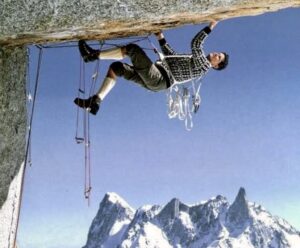The calendar is important for winter expeditions, especially for those aiming for a record or a first ascent. A climb may not classify as a winter effort if a climber starts one day too early or finishes one day late. But the definition of winter varies, at least for climbers.
Expedition reports sometimes mention astronomical or meteorological winter. Regular readers may already be familiar with this debate, but most of us may wonder what the difference is, and why it matters.
Astronomical vs meteorological

Graph: Indian Express
Astronomical winter depends on Earth’s position in relation to the sun. In the northern hemisphere, astronomical winter starts on the Winter Solstice, the shortest day of the year (December 21 for 2022, 2023, and 2024). It finishes with the Spring Equinox, on March 20 for the next three years. This corresponds with winter in the western calendar, so it is often called calendar winter.
However, temperatures aren’t solely dependent on the sun’s position. It is not uncommon to have the first winter storms and bitterly cold days before December 21, while March is often mild in comparison. Meteorological winter accounts for this and is instead based on average temperature. Temperature data collection is newer than the observation of the stars, and scientists established the meteorological seasons roughly 30 years ago. In climbing, meteorological winter starts on December 1 and finishes on February 28 (or February 29 in a leap year).
Why not wait until March?
Weather forecasts are vital for winter climbers. Climbers know that they are likely to get more summit chances during the first two weeks of March than in the middle of January. Summit windows like the one seized by the Nepali K2 team on January 16, 2021, are incredibly rare.
You might think that a smart team leader would stick to astronomical winter and aim to time their summit push for mid-March when the weather is milder. However, it is not that simple.

A descent from 6,200m on winter Nanga Parbat in the fog. Photo: Herve Barmasse
The tourist industry has led to the creation of separate climbing permits, depending on the season. These are assessed according to meteorological winter. Those hoping to remain in Base Camp after March 1 need to extend their climbing permits. Unless they reach some kind of agreement with the authorities, these teams must then pay for an expensive spring/summer permit. In the Himalaya, cheaper winter permits are available from the first day of December.
Another issue is that a “winter” ascent achieved after meteorological winter ends is likely to be contentious. The meteorological winter versus astronomical winter debate is far from settled in the climbing community. The first winter ascent of Gasherbrum I on March 9, 2012 by Adam Bielecki and Janusz Golab, as well as Bielecki, Artur Malek, Maciej Berbeka, and Tomasz Kowalski’s Broad Peak summit on March 5, 2013, are both considered spring summits by those advocating for meteorological winter.

Jost Kobusch on winter Everest. Photo: Jost Kobusch
How to make everyone happy
Making things more complicated, some climbers advocate that the entire expedition must take place during meteorological winter for it to count. This means that the team must not reach Base Camp before December 1 and must summit before the end of February. Using these criteria, more winter ascents become contentious. For example, the first winter ascent on Lhotse would not make the cut because although Krzysztof Wielicki summited on December 31, the expedition had set up Base Camp in November.
To avoid these headaches, most modern teams are careful to try and complete their expeditions within both winter limits. That is, they arrive in Base Camp after December 21 and plan to complete the expedition by February 28.
To save time, teams may arrange to have Base Camp set up in advance while they acclimatize somewhere else.






